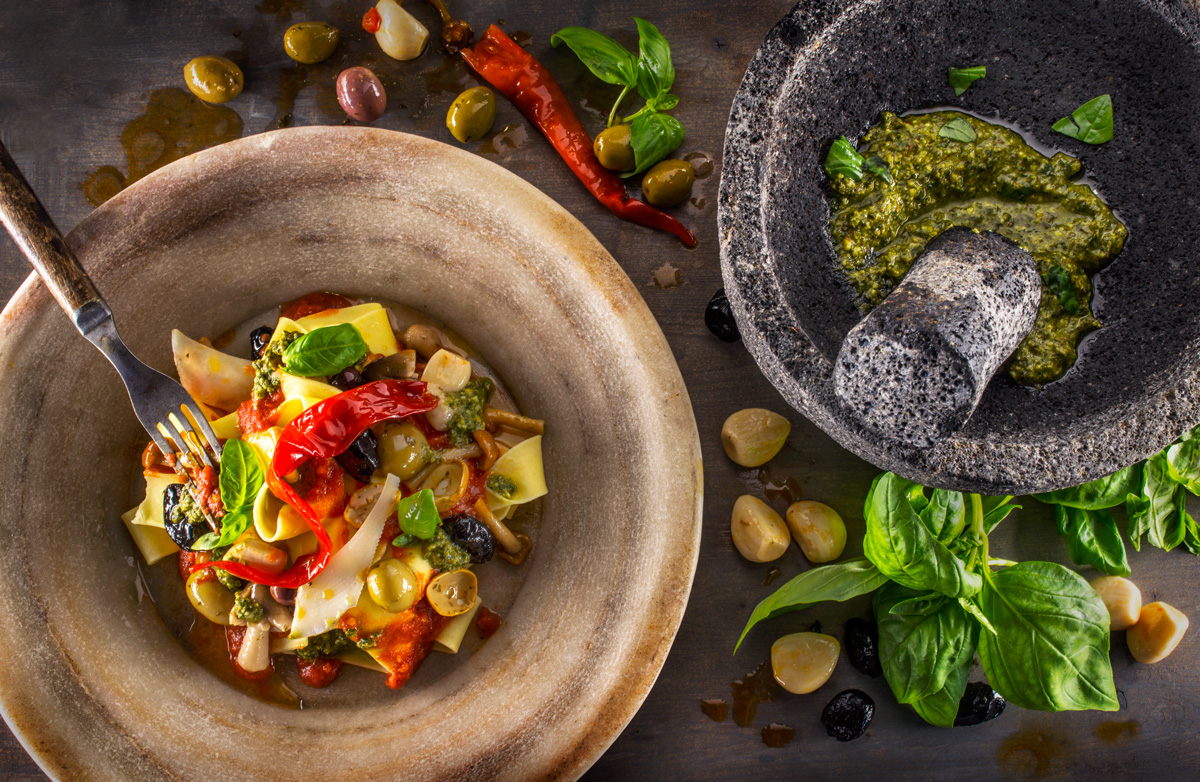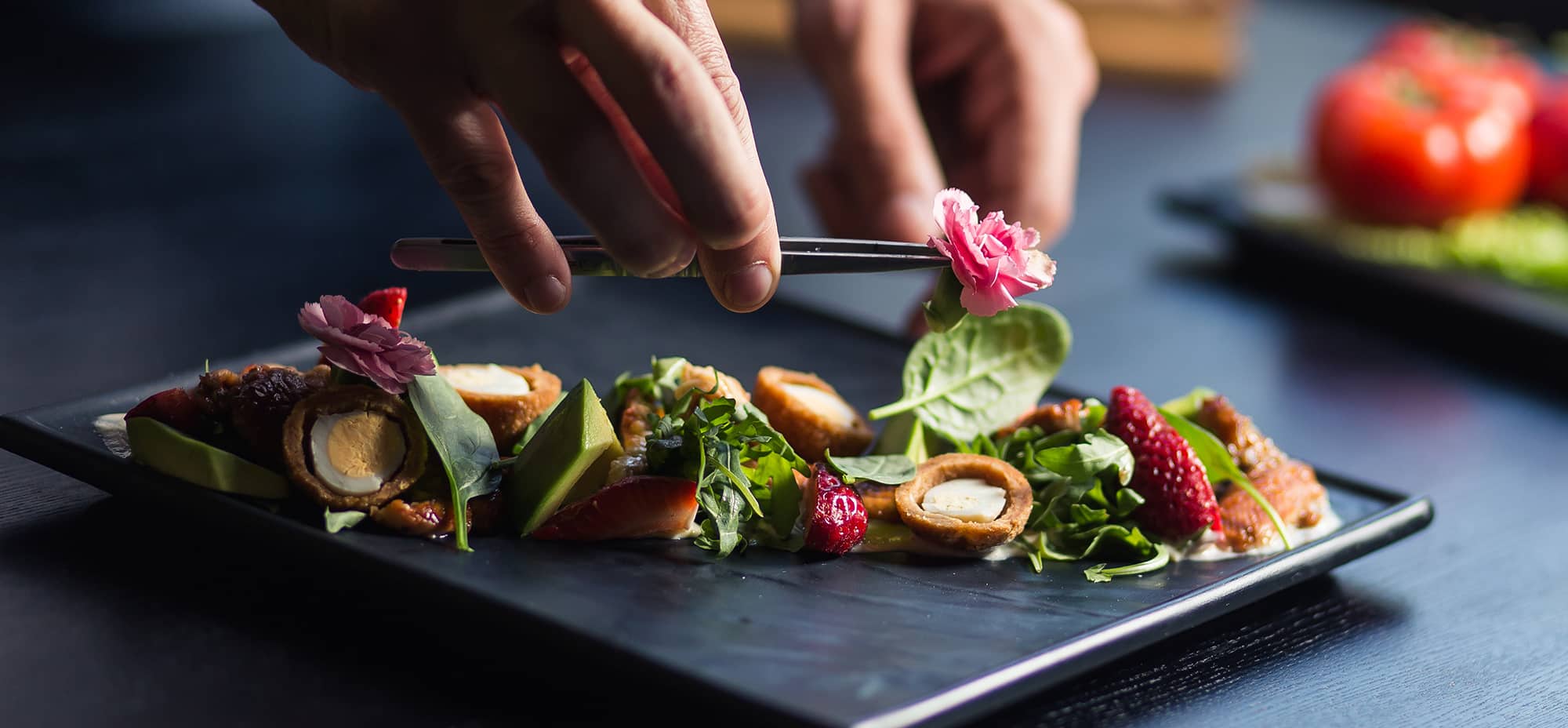Food styling, the art of arranging and presenting food for visual impact, has become an integral part of culinary photography and social media. This engaging practice transforms ordinary dishes into mouthwatering masterpieces, capturing the attention of foodies and inspiring culinary creations.
In this comprehensive guide, we delve into the fundamentals of food styling, exploring the principles of composition, color theory, and lighting. We uncover techniques for enhancing food’s appearance, such as using props, backgrounds, and garnishes, and provide tips for making food look fresh, vibrant, and appetizing.
Food Styling Fundamentals
Food styling is the art of arranging and presenting food in a visually appealing way. It is an important part of food photography, as it can make the food look more appetizing and inviting. The principles of composition, color theory, and lighting are all important in food styling.
Compositionrefers to the way that the elements of the food are arranged on the plate. The goal is to create a visually appealing image that is balanced and harmonious. There are many different composition techniques that can be used, such as the rule of thirds, the golden ratio, and the diagonal line.
Color theoryis the study of how colors interact with each other. In food styling, color can be used to create a variety of effects, such as contrast, harmony, and balance. Warm colors, such as red and orange, can make the food look more inviting, while cool colors, such as blue and green, can make the food look more refreshing.
Lightingis also an important element of food styling. The type of lighting used can affect the overall look and feel of the image. Natural light is often the best choice for food photography, as it can create a more natural and realistic look.
However, artificial light can also be used to create dramatic effects.
Techniques for Enhancing Food Appearance
Elevating the visual appeal of food is crucial for captivating audiences and stimulating their appetites. By employing strategic techniques, food stylists can transform ordinary dishes into visually stunning creations that evoke desire and enhance the dining experience.
Utilizing Props and Backgrounds
Props and backgrounds play a pivotal role in setting the stage for food photography. They provide context, create ambiance, and complement the food’s presentation. Carefully chosen props, such as rustic cutting boards, vintage utensils, or vibrant tablecloths, can add character and evoke a desired mood.
Backgrounds, whether plain or textured, can provide a contrasting canvas that highlights the food’s colors and textures.
Incorporating Garnishes, Food styling
Garnishes are the finishing touches that elevate a dish from ordinary to extraordinary. They add pops of color, texture, and flavor, enhancing the food’s overall appeal. Herbs, such as parsley, cilantro, or basil, can provide freshness and vibrancy. Edible flowers, like nasturtiums or pansies, add a touch of elegance and whimsy.
Even simple garnishes, like a drizzle of olive oil or a sprinkle of sea salt, can enhance the visual appeal of a dish.
Preserving Food Freshness
Maintaining the freshness of food is paramount for capturing its most appetizing appearance. Refrigeration, proper storage, and careful handling help preserve the food’s natural colors, textures, and flavors. Avoid overcooking, as it can dull colors and diminish textures. Using fresh, high-quality ingredients also contributes to the food’s vibrant appearance.
Creating Visual Contrast
Visual contrast is essential for creating a visually appealing food presentation. Contrasting colors, textures, and shapes add interest and depth to the image. For example, a bright green salad can be paired with a dark brown steak, or a smooth soup can be served in a textured bowl.
Contrasting shapes, such as a round cake on a square plate, can also create a dynamic composition.
Styling Different Food Categories

Styling food involves highlighting its visual appeal, making it more enticing and appetizing. Different food categories present unique challenges and require specific techniques to enhance their appearance. Understanding these nuances is crucial for effective food styling.
Styling Fruits and Vegetables
Fruits and vegetables offer vibrant colors and textures. To showcase their freshness, use natural light, avoiding harsh shadows or overexposure. Highlight their shape and form by arranging them in visually appealing compositions. Consider using props like greenery, herbs, or cut fruit to add depth and interest.
Styling Meats
Meats can be challenging to style due to their dense texture and potential for browning. Use natural light or soft, diffused lighting to minimize shadows. Marinate or glaze meats to enhance their color and moisture. Consider using herbs, spices, or vegetables to complement the flavors and create a visually appealing presentation.
Styling Desserts
Desserts offer a wide range of textures and flavors. Utilize contrasting colors and textures to create visual interest. Use fresh fruits, whipped cream, or sauces to add vibrancy and sweetness. Consider the use of props like cake stands, doilies, or candles to elevate the presentation and create an inviting ambiance.
Creating Food Styling Props

Food styling props play a crucial role in enhancing the visual appeal and storytelling of food photography. They provide context, create atmosphere, and add visual interest to the composition. Creating custom props allows you to tailor them specifically to your styling needs and achieve a unique and cohesive look.
When designing props, consider the following elements:
Materials
- Natural materials:Wood, stone, fabric, and greenery bring a sense of authenticity and organic beauty.
- Man-made materials:Acrylic, metal, and ceramic offer sleek and modern options with precise shapes and textures.
- Recycled materials:Cardboard, bottles, and cans can be transformed into unique and sustainable props.
Textures
- Smooth and polished:Reflects light and adds a touch of elegance.
- Rough and rustic:Creates a natural and earthy feel.
- Textured fabrics:Adds depth and interest to the composition.
Colors
- Neutral colors:White, black, and gray provide a clean and versatile backdrop.
- Bold colors:Adds vibrancy and energy to the shot.
- Complementary colors:Creates a harmonious and visually pleasing effect.
Food Styling for Social Media
In the realm of social media, food styling takes on a unique significance. With the proliferation of platforms like Instagram, Facebook, and TikTok, food has become a captivating form of content that can garner immense attention and engagement. To succeed in this competitive landscape, food stylists must adapt their techniques to cater specifically to the demands of social media.
Creating visually appealing food content for social media requires a keen understanding of the platform’s aesthetics, audience preferences, and content formats. Stylists must consider factors such as color palettes, lighting, composition, and the use of props to create images that are both visually stunning and shareable.
Color and Composition
Color plays a crucial role in food photography for social media. Vibrant hues and contrasting colors can instantly capture attention and evoke emotions. Stylists should carefully select ingredients and props that complement each other, creating a visually harmonious image. Additionally, composition is essential for directing the viewer’s gaze and creating a sense of depth.
Experimenting with different angles, perspectives, and arrangements can result in dynamic and engaging images.
Lighting
Lighting is another key element in food styling for social media. Natural light is often preferred for its flattering and realistic effects, but artificial light can also be used to create dramatic or moody images. Stylists should consider the direction and intensity of light to highlight specific elements of the dish and create shadows that add depth and dimension.
Props and Storytelling
Props can be used to enhance the visual appeal of food and tell a story. From vintage cutlery to rustic cutting boards, props can add character and context to an image. Stylists should carefully select props that complement the dish and align with the overall aesthetic of the image.
Food Styling Trends

Food styling is constantly evolving, with new trends emerging all the time. To stay ahead of the curve, it’s important to be aware of the latest techniques and styles.
One of the biggest trends in food styling right now is the use of natural and organic elements. This includes using fresh produce, herbs, and flowers to create a more rustic and authentic look. Another trend is the use of bright and vibrant colors.
This can be achieved through the use of colorful fruits and vegetables, as well as through the use of props and backdrops.
Innovative and Creative Food Styling Techniques
In addition to the trends mentioned above, there are a number of other innovative and creative food styling techniques that you can use to make your food look its best. These techniques include:
- Using smoke to create a sense of drama and mystery
- Using mirrors to create the illusion of more space
- Using props to tell a story or create a specific mood
Food Styling as a Career
Food styling is a dynamic and rewarding career path that offers a unique blend of creativity, technical skill, and passion for food. With the ever-growing demand for visually appealing food content, food stylists are in high demand across various industries.
Career Opportunities
The food styling industry encompasses a wide range of opportunities, including:
- Food photography: Collaborating with photographers to create visually stunning food images for magazines, cookbooks, and advertising campaigns.
- Culinary production: Preparing and styling food for television shows, commercials, and food-related events.
- Restaurant consulting: Assisting restaurants with menu development, food presentation, and ambiance.
- Packaging design: Designing and styling food packaging to enhance product appeal and consumer engagement.
- Social media marketing: Creating visually compelling food content for social media platforms, including food blogs, Instagram accounts, and TikTok videos.
Skills and Experience
To succeed as a food stylist, individuals should possess a combination of skills and experience, including:
- Culinary knowledge: A deep understanding of food ingredients, flavors, and cooking techniques.
- Artistic vision: The ability to create visually appealing and cohesive food presentations.
- Technical proficiency: Expertise in food preparation, styling, and photography equipment.
- Attention to detail: An unwavering focus on precision and meticulous execution.
- Communication skills: The ability to effectively collaborate with clients, photographers, and other professionals.
- Industry experience: Hands-on experience in food styling, either through formal education or internships.
Question Bank: Food Styling
What is the importance of food styling?
Food styling enhances the visual appeal of food, making it more appetizing and desirable. It plays a crucial role in food photography, advertising, and social media, capturing attention and stimulating the viewer’s senses.
How can I improve my food styling skills?
Practice regularly, experiment with different compositions and techniques, and seek inspiration from food stylists and photographers. Pay attention to lighting, color theory, and the use of props and backgrounds to create visually stunning images.
What are some current trends in food styling?
Current trends include natural and rustic presentations, vibrant colors, and creative use of props and backgrounds. Food stylists are also incorporating elements of storytelling and narrative into their work, creating visually engaging images that evoke emotions and tell a story.
